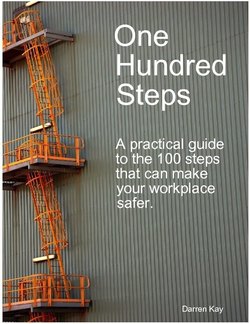Читать книгу One Hundred Steps: A Practical Guide to the 100 Steps That Can Make Your Workplace Safer - Darren Inc. Kay - Страница 20
На сайте Литреса книга снята с продажи.
14. Create a floor-plan
ОглавлениеBelieve it or not, this simple activity is the centrepiece of your communications strategy. Though a simple document, an annotated floor plan conveys a vast amount of information. And quite often the process of creating the floor plan highlights areas for improvements; such as ease of egress, illumination of emergency exits, appropriateness of fire extinguisher type and placement to name but a few.
You probably have a dimensioned floor plan somewhere, but if you don’t you can quickly sketch one out and measure (or pace) its size. Then place into a scale drawing (maybe using MS Visio to do so).
What to do right now: Once you have the walls, windows and doors on paper, label the main areas. Now identify on the floor plan the location of:
- Fire Extinguishers
- First Aid Kits
- MSDS Folios
- Emergency exits
- Emergency evacuation muster points
- Areas of particular hazards (e.g. Flammables store)
- Location of Hydrants
Once complete, Print in A3 colour, laminate and place in prominent locations around the building. Then put a forward note in the OHS diary to review the plan for accuracy in 12 months time.
